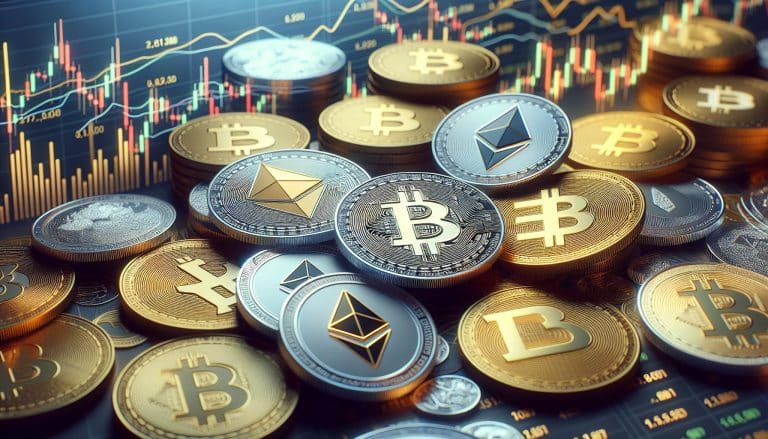Xrp Adoption Challenges
XRP is a digital asset, native to the XRP Ledger, which was created by Ripple Inc. The goal of XRP is to enable faster and more efficient international payments. Despite its potential to revolutionize the financial system, XRP adoption has been slow due to several challenges. This article will explore some of these challenges, including regulatory uncertainty, scalability issues, market volatility, lack of liquidity, poor user experience, security risks and low public awareness. Additionally, this article will offer possible solutions for increasing XRP adoption in the future.
The success of any new technology depends on its successful implementation and acceptance by users. Unfortunately, many challenges have hindered that process for XRP. Regulatory uncertainty has been one of the biggest obstacles in terms of widespread adoption as different countries have different regulations regarding digital assets such as XRP. Scalability issues are another factor that can prevent users from utilizing XRP’s services due to limitations in transaction throughput and latency times. Furthermore, market volatility and lack of liquidity can make it difficult for users to accurately predict prices when trading or making payments with XRP tokens. Poor user experience also presents a challenge as inexperienced users may find it confusing or intimidating to use an unfamiliar technology like cryptocurrency platforms like RippleNet or xCurrent. Finally, there are security risks associated with using digital currencies that must be addressed before widespread adoption can occur; however increased public awareness regarding these risks could help foster trust in the platform among potential users.
Regulatory Uncertainty
Regulatory uncertainty surrounding Ripple’s XRP digital asset has hindered its adoption in the marketplace. The lack of industry standards and clear regulations for digital assets is a major source of concern for potential investors, merchants, and financial institutions. This has caused many would-be adopters to hesitate before entering into partnerships with Ripple or utilizing XRP as a payment option. As such, the lack of regulatory clarity presents a significant barrier to widespread adoption. Consequently, it is essential that Ripple works to build trust with stakeholders by establishing better industry standards and guidelines for XRP use if they are to realize their goal of wider adoption. In order to move forward, scalability issues must also be addressed.
Scalability Issues
Scalability is a key factor limiting the widespread implementation of digital currencies. Ripple’s XRP is no exception, and its scalability issues stem from its inefficient transaction speed and limited scalability. According to research conducted in 2019, XRP can only process 1500 transactions per second as opposed to Bitcoin’s 7 transactions per second. This lack of scalability means that the number of users who can use XRP at any given time is restricted, severely limiting its potential for widespread adoption. Additionally, the network architecture which allows XRP to maintain a faster transaction rate than Bitcoin also limits its scalability as it requires more resources when compared with other blockchains such as Ethereum or Hyperledger Fabric.
This lack of scalability has been identified by industry experts as one of the major challenges facing XRP’s wider adoption and implementation. As such, developers have been looking into solutions such as sharding techniques which could increase the number of transactions supported by the network without sacrificing security or decentralization principles. While there have been some developments in this area, a full-scale solution has yet to be implemented on a large scale making it difficult for large enterprises to consider using XRP for their payment processing needs. Market volatility further complicates this issue as businesses are reluctant to invest in an asset with high levels of price fluctuations.
Market Volatility
A major obstacle in the widespread utilization of digital currencies such as Ripple’s XRP is the significant market volatility that often accompanies them, making it a risky venture for businesses to undertake. Cost volatility and exchange risk are two main factors that contribute to this issue: cost volatility involves significant fluctuations in the price of XRP over short periods of time, making it difficult to rely on its value; while exchange risk involves different rates between buying and selling, which can lead to losses if not taken into account. Furthermore, these issues make governments wary of investing in or regulating digital currencies because they cannot guarantee stability.
The lack of liquidity further amplifies these concerns by adding an additional layer of uncertainty. This occurs when there is a limited number of buyers and sellers willing to trade at any given time, meaning transactions may take longer than expected or even fail altogether due to a lack of support. As a result, the difficulty in predicting future costs or outcomes makes it difficult for businesses and investors alike to confidently put their resources into XRP without facing financial risks. Overall, market volatility remains one of the major challenges impeding widespread adoption of digital currencies like XRP.
Lack of Liquidity
The lack of liquidity further exacerbates the market volatility of digital currencies such as Ripple’s XRP, making it difficult for investors and businesses to confidently invest in them without facing potential financial losses. The primary challenge behind the low liquidity of XRP is the lack of trust from investors and other stakeholders due to its relative newcomer status within the crypto sphere. This lack of trust has created a deficiency in external funding which would be necessary for supporting higher liquidity levels. Consequently, on-chain transactions are subject to high fees, slow transaction speeds, and long wait times making investing in XRP less attractive. Furthermore, given the heightened risk associated with low liquidity levels, there is a general disinclination among most institutional investors towards investing in XRP. To this end, poor user experience can become another hurdle for those looking to adopt XRP as their preferred digital currency.
Poor User Experience
Allegorically speaking, investing in digital currencies can be compared to a rollercoaster ride; not only is there a high level of volatility involved, but the user experience is often bumpy and uncomfortable due to slow transaction speeds, high fees, and long wait times. The adoption of Ripple (XRP) in particular is hampered by an inefficient user experience which makes it difficult for new users to comprehend its complex setup. In addition, XRP’s fees are usually higher than those of other cryptocurrencies like Bitcoin or Ethereum due to the way it handles transactions within its network. This makes XRP less appealing as an investment option when compared with other alternatives. As such, improving the user experience would go a long way towards increasing XRP adoption rates by reducing complexity and driving down transaction costs. From this point forward, we will discuss the security risks associated with XRP investments.
Security Risks
Investing in Ripple (XRP) carries certain security risks which must be considered before deciding to pursue this type of investment. Security risks include the potential for unauthorized access control, data privacy breaches, and malicious attacks on the network. To mitigate these threats, investors should take appropriate precautions when storing their XRP tokens such as using two-factor authentication or a hardware wallet.
| Threats | Mitigation Strategies | Impact |
|---|---|---|
| Unauthorized Access Control | Two-Factor Authentication & Hardware Wallet | Increased Security & Reduced Risk of Losses |
| Data Privacy Breaches | Verified Third-Party Exchanges & Private Keys Stored Offline | Improved Data Protection & Lower Risk of Theft/Fraud |
| Malicious Network Attacks | Established Network Protocols & Regular Software Updates | Enhanced Network Stability & Higher Resilience Against Attackers |
These measures are critical in order to protect investments while maximising returns from XRP transactions. By taking proper security measures and staying informed about the latest developments in the crypto space, investors can reduce their exposure to risk and increase their chances of success with XRP adoption. Transitioning without writing ‘step’, understanding the security risks associated with investing in Ripple is essential if one wishes to make sound, informed decisions when utilising XRP tokens.
Low Public Awareness
Despite its growing popularity, Ripple (XRP) is still not widely known among the public and faces low levels of public awareness. A lack of educational outreach to the public and insufficient media coverage have contributed to this challenge. As a result, many people are unaware of the potential benefits that XRP offers such as faster transaction times and lower fees than traditional banking solutions.
To increase adoption, XRP needs better educational outreach initiatives to inform the public about its features and advantages over other payment systems. Furthermore, increased media coverage can help raise awareness about XRP and drive more people to use it. This could be done through strategic partnerships with major news outlets, influencers or social media campaigns. To transition into the next section on solutions without using ‘step’, it is clear that there are various strategies available for increasing XRP adoption by dealing with low levels of public awareness.
Solutions to Increase Adoption
To tackle the issue of low public awareness and drive adoption, Ripple (XRP) must pursue various proactive strategies. Cost savings is one strategy that has been effective in driving adoption due to the fact that XRP transactions are faster and cheaper than traditional methods. By emphasizing cost savings to merchants, more merchants will be likely to accept XRP as a form of payment. Additionally, by making XRP merchant appeal more attractive through marketing campaigns, it can increase visibility and public awareness of the cryptocurrency thus increasing its adoption rate. This can be done by highlighting the features that make XRP unique such as its speed, scalability, security and decentralization. Furthermore, by presenting these features in a way which is appealing to potential users who may not understand cryptocurrencies yet can attract them into trying it out for themselves.
Frequently Asked Questions
What is XRP?
XRP, also known as Ripple, is a digital currency created in 2012 by the company Ripple Labs. It is used on the Ripple network to facilitate international money transfers between banks and other financial institutions. XRP operates as a native asset on its own blockchain network, allowing it to be exchanged for other currencies or assets.
Is XRP a good investment?
Investors must consider liquidity issues and the lack of mining capabilities when evaluating XRP as an investment. Its potential for long-term gains should be weighed against these factors to determine if it is a sound financial decision.
What is the cost to use XRP?
The cost to use XRP depends on the scalability issues and liquidity concerns, making it difficult to quantify. However, by leveraging its innovative technology, it has the potential to reduce costs when compared to traditional payment solutions. Thus, making XRP a viable option for those seeking cheaper transaction fees.
Does XRP comply with anti-money laundering regulations?
AML compliance is a major challenge for financial institutions. Solutions to comply with AML regulations include the implementation of measures such as transaction monitoring and customer due diligence. These solutions can have impacts on XRP adoption, making AML compliance an important factor when considering use of XRP.
How can XRP be used in everyday transactions?
Despite potential concerns of its alternative uses, XRP’s future outlook as a payment system is promising. It can be used to facilitate everyday transactions by providing fast, affordable and secure money transfer solutions across borders.






 Bitcoin
Bitcoin  Ethereum
Ethereum  Tether
Tether  XRP
XRP  USDC
USDC  TRON
TRON  Lido Staked Ether
Lido Staked Ether  Dogecoin
Dogecoin  Figure Heloc
Figure Heloc  Cardano
Cardano  WhiteBIT Coin
WhiteBIT Coin  Bitcoin Cash
Bitcoin Cash  Wrapped stETH
Wrapped stETH  Wrapped Bitcoin
Wrapped Bitcoin  USDS
USDS  Binance Bridged USDT (BNB Smart Chain)
Binance Bridged USDT (BNB Smart Chain)  Wrapped eETH
Wrapped eETH  Chainlink
Chainlink  Monero
Monero  WETH
WETH  Stellar
Stellar  Zcash
Zcash  LEO Token
LEO Token  Coinbase Wrapped BTC
Coinbase Wrapped BTC  Hyperliquid
Hyperliquid  Ethena USDe
Ethena USDe  Litecoin
Litecoin  Sui
Sui  Avalanche
Avalanche  sUSDS
sUSDS  Hedera
Hedera  Shiba Inu
Shiba Inu  Dai
Dai  USDT0
USDT0  PayPal USD
PayPal USD  Mantle
Mantle  World Liberty Financial
World Liberty Financial  Toncoin
Toncoin  Cronos
Cronos  Ethena Staked USDe
Ethena Staked USDe  Uniswap
Uniswap  Polkadot
Polkadot  Canton
Canton  Aave
Aave  USD1
USD1  MemeCore
MemeCore  Rain
Rain  Bitget Token
Bitget Token